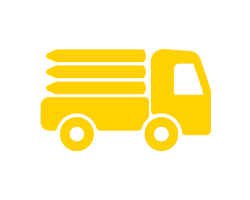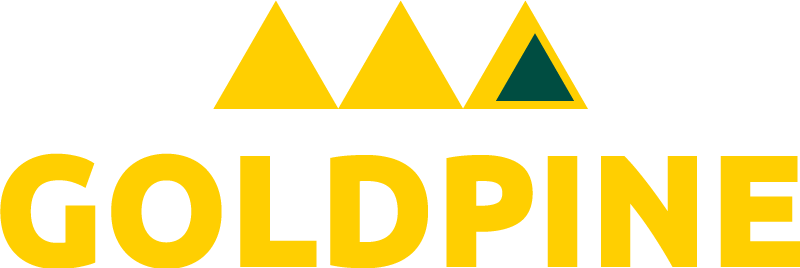Goldpine
Ian Scott: Farming Through a Science Based Lens
Oraka Farms

Located in a small settlement in the South Waikato District of the North Island, Ian Scott’s Okoroire-based Oraka Farms runs across land known to be some of the highest quality soils in the country. The land is naturally free draining which means there are no drains on the farm, taking a small pressure off Ian who effortlessly juggles being a large animal vet with deer and dairy farming, and maize cropping.
As a young vet in the late 70s, Ian would helicopter around in the Kahurangi National Park catching deer. In the early days they would shoot tranquiliser darts, and when they were feeling brave they would jump out the door and grab them. This progressed into using capture nets and Ian’s primary role was to get them back into a farming situation where he could fix broken legs and test them for TB. It was through this that his interest in deer grew and the opportunity presented itself to buy the odd good one and start farming them. Ian’s family had always been dairy farmers in Matamata after immigrating to New Zealand from Ireland. He came back to lease the farm when his father got older and that was when the two industries combined to grow alongside each other into what is now six properties – four owned and two leased.

Across the six properties which makes up 385 hectares, Ian farms around 2,100 deer. He also has 400 cows milking at any one time, with an autumn calving herd of 85-90 cows. There is a 75/25 percent split calving plus 20 percent replacement young stock. An additional 90 one-year-old bulls are on the new block he recently purchased. With his approach being founded on a science based understanding, Ian looked for ways to be able to integrate both deer and dairy together in a more effective way. “We use deer at certain times of the year to improve the pasture quality for the cows,” he said.
“When we're trying to get the cows to produce the maximum amount of milk and get back in calf, say in October and early November, we allow the cows to leave more grass behind in the paddock, so it allows them to maximise their intake. We're able to use the Wapiti deer or the hinds, which haven't calved yet, and they're still on slightly above maintenance intake, and put them in a cow paddock at one o'clock in the afternoon. When the cows come out, we leave the deer there for 24 hours and they will take the residual grazing level that we’re allowing the cows to leave behind from sixteen or seventeen-hundred kilos down to an optimum level of fourteen to fifteen-hundred kilos. And this is where we get the highest quality regrowth of grass.”

“We also know that the dairy cows remove most of the parasites from the pasture and parasite challenges are a big problem for young deer. By grazing the young deer at critical times of the year on pastures that have had the cows graze last time around, that reduces the parasite challenge. It's sustainability by reducing our dependence on mechanical topping, by reducing our dependence on parasite control through chemicals, or by using other agrochemicals to reduce weeds.”
By growing up to 50 hectares of maize on their support block, it has allowed them to develop a system that has seen them harvest over 30 tonnes of dry matter in the last several years. That block is now growing nearly twice the amount they grow in terms of grass on the dairy and deer farm, and it's used as additional high quality feed to allow them to carry heavier stocking rates and to produce more per hectare. They recycle the captured nutrients from the dairy platform and safely transport them to another platform to grow additional plant material. It’s an innovative way to drive the cows to produce more and Ian has termed this "nutrient recycling". Over the last season in the dairy operation, they produced 3,500 kilogrammes of milk solids per hectare. Ian was quick to point out that when talking scientifically, you need to know where you’ve started to really understand what has actually been achieved.

“When I bought the dairy farm, it was producing about 58,000 kilogrammes of milk solids,” he said. “Now we’re producing on the same area, or slightly more because I lease some of the deer farm to it, and we’re producing over 200,000 kilogrammes of milk solids. But to do that, we're also integrating the support block which is producing more food which is feeding into the dairy block. So, it's never that simple. You never get anything for nothing, but you simply look at each block and ask how can we maximise how much it produces, and how can we take that material and turn it into the most money.”
With the dairy and deer farms seeming to keep Ian occupied, we wondered how he found the time to also practice as a large animal vet. The more we spoke about how everything was integrated, the more apparent it became that this side also played an important role in his farming community. For Ian, it’s more than fixing lame cows or helping with difficult calvings, it’s helping them improve the productivity of their farms.

“A lot of my farmers now come to depend on me for advice around growing their youngstock and improving their growth rates,” he said. “They're using my knowledge and the understanding that I have to overcome these hurdles myself to give them the confidence to look at what I do, and to incorporate some of the things that I might be doing into their own farming operations to improve it. And the reverse happens for me, I'm always looking at my farmers. They're always thinking of smart ideas and better ways to build things, or new systems, or smarter ways of managing their animals. So it's a continuous change and interchange of ideas that allows you to try and stay near the top of your game really.”
Driven by data, Ian mentioned that New Zealand produces around 2 percent of the world’s food. From all the science and research that has been done by Dr Graeme Coles, a nutrition scientist, he said New Zealand is the most efficient producer of animal protein, with the least greenhouse gases.

“New Zealand farmers are incredibly efficient at what they do,” Ian commented. “They've used science and 100 years of development to reach that level of efficiency. So, before you force on them a system that's been developed to try and improve rundown farming systems overseas, you have to be really sure that the starting point is the same and that our soils are not depleted like the soils of Australia or the North American Grain Belt. We have some of the best soils in the world and we have the highest amount of organic matter in our soils.”
Ian also owns one of the most significant natural areas in the South Waikato and it's called Lake Okoroire. It's the only peat lake remaining in the district. Since purchasing this block, he has planted 15,000 native trees and invested somewhere between $50,000 and $100,000 of his own money, alongside the 15 percent of expenditure which has been put up for regional councils. They’ve involved the community, from school children to the local banks on their days of doing good deeds, to help plant trees, as well as investigated different systems they could use to re-establish native planting.

“I've set myself a goal of planting 50,000 native trees and plants in my lifetime, and a lot of my farmers have put a lot of their own personal money into re-establishing native plantings and improving the environment,” he said. “I think it's time as a community, and as a New Zealand Inc., that we acknowledge the work that's being done. We need to actually start looking seriously at what people are doing and how we as New Zealanders can all work together to improve this country that we are lucky enough to live in.” With new deer fencing and yards often being built on the farm, Ian heads to his local Goldpine store in Putaruru for supplies. He said it’s a matter of working together and that they have been great supporters of his business. “If I suddenly realise I'm short of three strainer posts, I can leap in the ute with the trailer and shoot down there and the materials are sitting there,” Ian said.
He's also just finished building a state of the art effluent management system where they store all of their liquids in an aerobic fashion. This significantly reduces any odours and losses of green house gases. In terms of environmental data for Oraka Farms, Fonterra has calculated that their greenhouse gas and nitrate losses per kilogramme of milk solids produced are considerably lower than the average farming systems and demonstrates that productivity increases do not go hand in hand with a larger environmental footprint.

Ian has a long list of accolades and has held many significant roles at a national level, all focussed around deer welfare and farming systems. He’s always prepared to take a risk and live on the edge of technology. He also admitted that sometimes he doesn’t always get it right, but that it’s important to allow people to be inventive so they can find the solutions we need.


.jpg)


